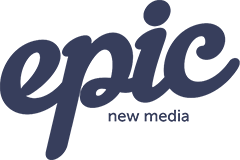SEO Audit Checklist
Below is our SEO Audit Checklist. Covering these basics will ensure that your website appears in Google’s search results and that your website is relevant for target keywords.
Get in touch today for a free SEO audit and opportunity report.
Action | Why | How | Priority |
|---|---|---|---|
| Create Sitemap.xml | Sends good trust signals to Google and potential website visitors | There are WordPress plugins (like Yoast and RankMath) will create a sitemap. This will be a feature in most CMS. | High |
| Robots.txt File | Gives search engines instructions on how to crawl the website | This action will probably require the time of a person who can navigate around the site files easily, but it is a straight forward task. A robots.txt file needs creating in the root directory. | High |
| Set Up Google Analytics | Allows you to accurately monitor the performance of your website | Google has a useful guide https://support.google.com/analytics/answer/1008015?hl=en | High |
| Set Up Google Search Console | Allows you to see how Google is crawling your website | Google has a useful guide https://support.google.com/webmasters/answer/34592?hl=en | High |
| Submit the Sitemap.xml via Google Search Console | To prompt Google to crawl your site | Find your sitemap URL (typical yourdomain.com/sitemap.xml or yourdomain.com/sitemap_index.xml) > login to Google Search Console > click Sitemaps > Enter your sitemap URL and click submit | High |
| Keyword Optimised H1 Tags | Ensures that pages are relevant for target keywords | Find your sitemap URL (typical yourdomain.com/sitemap.xml or yourdomain.com/sitemap_index.xml) > login to Google Search Console > click Sitemaps > Enter your sitemap URL and click submit | High |
| Keyword Optimised Title Tags | Ensures that pages are relevant for target keywords | Add target keywords to your web pages' title tags. The area that you can update a page's title tag should already be in place (Yoast or RankMath can be used on WordPress). The title tag and the h1 tag should target the same primary keyword | High |
| Review Page Loading Speed | A slow loading page harms user experience and it also slows down search engines when crawling the website | Check each page template of your site (homepage, category, service, product, blog, etc.) using a tool such as Pingdom (https://tools.pingdom.com/) and Google PageSpeed Insights (https://developers.google.com/speed/pagespeed/insights/) | High |
| URLs Use HTTPS rather HTTP | Makes the website more security | Your hosting providers will be able to implement this | High |
| Ensure that the Site is Mobile-Friendly | Your site will be penalised by Google if your site doesn't work correctly on mobile devices | Test using Google's Mobile-Friendly Test https://search.google.com/test/mobile-friendly | High |
| Target Keyword Mentioned in the Page's URL | Improves keyword relevancy for the page | Update the URL of a page to contain the primary target keyword and make sure you set up redirects so don't create any broken pages or lose keyword rankings | High |
| Fix Broken Links | Improves user experience | Scan your website with auditing tools such as Ahrefs, SEMRush, Screaming Frog. These tools will provide you with a report that shows broken links and other issues with your website. | Medium |
| Add Sitemap to Robots.txt File | Enables search engines to find the sitemap.xml easily | Find your sitemap URL (typical yourdomain.com/sitemap.xml or yourdomain.com/sitemap_index.xml) and add it to your Robots.txt file. | Medium |
| Set Up Goal Tracking in Google Analytics | You can see how many enquiries, potential leads and/or sales your website is generating | Gogole has a guideful guide https://support.google.com/analytics/answer/1032415?hl=en | Medium |
| Create Google My Business Listing | Sends good trust signals to Google and potential website visitors | Create a Google My Business listing here https://www.google.com/intl/en_uk/business/ | Medium |
| Meta Descriptions | Sends good trust signals to Google and potential website visitors | The area that you can update a page's meta description should already be in place (Yoast or RankMath can be used on WordPress). | Medium |
| Landing Pages Featured in the Top Navigation | Allows search engines to crawl and find pages easily | Depends on the flexibility of the CMS. This can be implemented in WordPress in the Menu section. This may require the time of a developer. | Medium |
| Key Landing Pages Featured in the Footer | Allows search engines to crawl and find pages easily | Depends on the flexibility of the CMS. This can be implemented in WordPress in the Menu section. This may require the time of a developer. | Medium |
| Internal Links in the Content to Relevant Pages | Improves keyword relevancy for target page and improve user experience | Review your content and add internal links to relevant pages. | Medium |
| Resolve 404 Errors in Google Search Console | Remove broken pages from search engine results | Review your content and add internal links to relevant pages. | Medium |
| Keyword Optimised H2 Tag | Enables pages to rank for long-tail keywords | Adding secondary/long-tail keywords as h2 tags on pages. | Medium |
| Regularly Update the Blog | Gives search engines a reason to crawl the site again and allows you to target long-tail keywords. | Hopefully, you should have a Blog or News section built into the site, otherwise, you will require the time of a developer. | Medium |
| Alt Tags | Describes what's on the image and the function of the image on the page | There should be an option your CMS to add Alt tags for images in the Media/Image Library or when you add them to the page. | Low |
